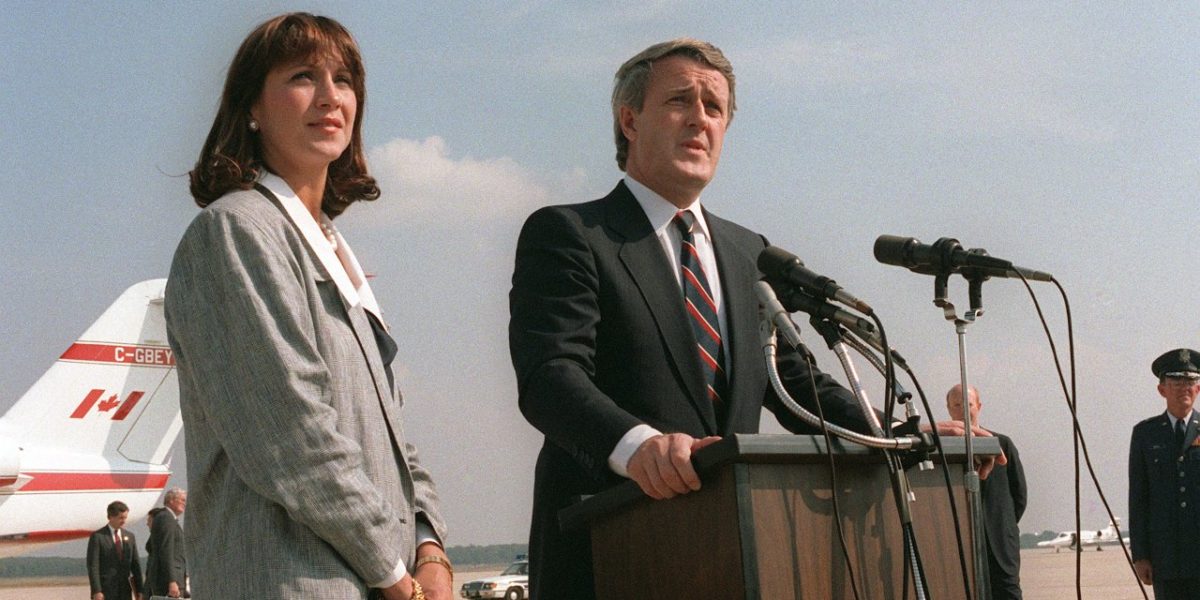The first real glimpse Canadians got of Brian Mulroney could have been a political career-ender.
It was February 1983, and he was the front-runner in the Progressive Conservative party’s leadership race. He was also the president of the Iron Ore Company of Canada, and his assignment from the company’s U.S. bosses was to shut down the company’s mining operations in Schefferville, Quebec, turning the once-thriving remote northern community into a ghost town.
With the national media camped out in Schefferville to see Mulroney perform, the aspiring prime minister announced generous severance packages for the hundreds of terminated employees, turning the potential disaster into a political triumph.
But, as a gleeful Mulroney headed out of Schefferville with a captivated press corps in tow, Iron Ore was also laying off almost a thousand workers in Labrador City, Newfoundland — without paying them any severance. Far from the cameras, many of these workers faced personal bankruptcy, unable to keep up mortgage payments on their suddenly worthless houses or to pay the $10,000 the company was demanding to move their house trailers out on the company-owned railroad.
It was a testament to Mulroney’s political skills that he was able to spin a positive narrative about himself — even as he left behind thousands of devastated employees in the snowbanks of Labrador City.
It was this political dexterity — manoeuvring skilfully on behalf of powerful business interests — that enabled Mulroney to go on to be a highly consequential prime minister who ushered Canada into an era in which corporations have dominated and profit maximization has become the ruling ethos.
In retrospect, it may seem inevitable that Canada would follow the lead of U.S. President Ronald Reagan who was aggressively promoting corporate interests south of the border.
But Canada had a different political tradition, with government playing an important role advancing the public interest through crown corporations and universal social programs.
Canadian business leaders wanted that changed, even though they understood that most Canadians didn’t. In a paper released just before the 1984 election, the CEOs who made up the Business Council on National Issues acknowledged that Canada’s higher social spending reflected “the greater priority that Canadians put on social welfare.”
Canadians would just have to learn to make their social well-being less of a priority, the CEOs had decided.
Mulroney, fresh from his lucrative years in the corporate world, apparently agreed.
Only a few months after taking office, his government produced a sweeping document called “A New Direction for Canada” that was strikingly similar to the economic blueprint laid out a few months earlier by the CEOs.
And Mulroney largely delivered for the business world, introducing far-reaching changes that transformed the Canadian political and economic landscape, partly through his free trade deal with the U.S. that weakened labour and enhanced the rights of business and investors.
Earlier Canadian governments had developed more than 60 crown corporations. Mulroney privatized or began privatizing some key ones, including a national railway, oil company and airline, and completed the privatization of Connaught Labs, a publicly-owned biomedical company that had become one of the world’s leading vaccine producers.
Mulroney and his business backers wanted us to believe that such national projects were no longer viable, that we’d have to limit our vision of what we could do collectively and learn to rely on the private sector to do everything from building our infrastructure to providing our health care.
But there have always been more options than business has led us to believe — as illustrated by the way European countries have succeeded in maintaining high social spending and equality levels, while Canada has drifted closer to the inequitable U.S. model.
Canada’s corporate world has thrived in recent decades, which explains much of the elite adulation for Brian Mulroney since his death last month. But the world he ushered in has left many Canadians feeling like the workers he left behind in the snowbanks.
This article was originally posted in the Toronto Star.



